Utilizing a stand mixer to make pie crust is a mess-free and simple way to achieve this infamously tricky task. Plus, it results in super flaky pie dough! This guide will take you through the step-by-step process of How to Make Pie Crust in the Stand Mixer, complete with essential tips and a video to demonstrate the process.

Want to save this recipe?
Enter your email & I'll send it to your inbox. Plus, get weekly updates from me!
Stand Mixer Pie Crust
For many bakers, making pie crust can be intimidating, leading them to choose store-bought options instead. I'm on an unofficial mission to change this narrative and show that making pie dough from scratch is not only doable but also well worth the extra effort.
Previously I've talked about making pie crust by hand, in a food processor, and with a pastry blender. And now, we're going to talk about how to make it in a stand mixer.
If done properly, making dough in the stand mixer can produce a very tender and flaky pie dough. In fact, the flakiest pie crust recipe I have on this site is made in a stand mixer, as is this Rough Puff Pastry recipe. The dough comes together easily in the stand mixer, especially after the water is added, and is much easier to clean up than other methods.
Additionally, if you are making a large batch of pie dough, the stand mixer is the best choice. Depending on the size of the mixer, it can make between 2 and 6 pie crusts at a time. The recipe shared in this article yields 2 pie crusts, but it can be doubled or tripled as needed.
So, let's get to making it, shall we? The article below is jam-packed full of useful information. You can jump around using the menu below, or skip to the end of the article for the full recipe.
Jump to:
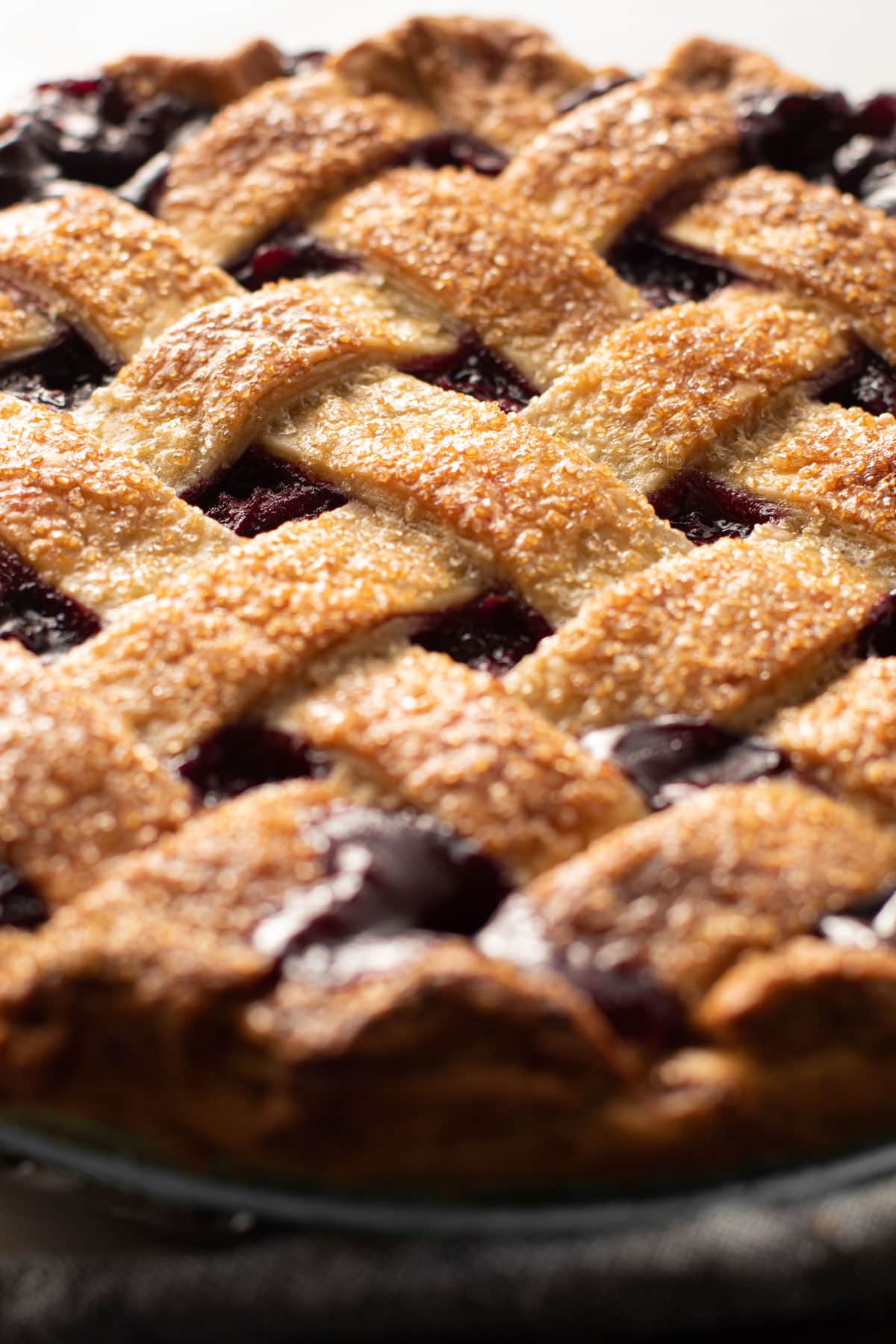
A Very Intro on Pie Pastry
At its heart, good pie dough is a balance of three key ingredients: flour, butter, and water. The water interacts with the flour to form the network of structure, also know as gluten. You want to develop just enough so the pastry has some strength, but not so much that it's tough. The butter coats the flour, helping to inhibite excess gluten formation. It also creates pockets of steam for that flakiness we all expect from butter pie crusts.
For this article, I'm sharing a super basic pie crust recipe to demonstrate how to make it in the stand mixer. It's as stripped down as possible (aside from maybe this 3-ingredient pie crust.) If you are looking for the My Favorite Butter Pie Crust recipe, it's slightly different than the one shared here, with a bit more butter and the addition of cornstarch to lighten it up.
Ingredients Needed
This is an overview of the ingredients, as well as an explanation behind them. For the full recipe, scroll down to the end of the article.

- All Purpose Flour: Generally speaking pastry flour is the best flour for making pastry because it has a lower protein content. But most people don't keep it in their kitchen, so this recipe it calls for all-purpose flour. If you do have pastry flour, feel free to use that instead.
- Salt: This recipe was tested using Diamond Crystal coarse kosher salt. If you use Morton's kosher salt or fine salt, decrease by about half for volume, or use the same amount by weight.
- Unsalted butter: Make sure you use good quality butter here! I like unsalted that way you can control the amount of added salted.
- Apple cider vinegar: This helps make the dough tender by inhibiting too much gluten formation and it brings a nice subtle hint of tang to the crust that keeps it nicely balanced.
- Ice water: Water brings the whole thing together, but it should be cold to help keep the temperature of the dough as chill as possible. Honestly, when I don't have ice laying around I'll just let the tap run for 30 seconds to get water cold and use that.
Step-by-Step Overview

Step 1: Mix the dry ingredients.

Step 2: Add in the cold butter.

Step 3: Mix until the butter is in small pieces, about the size of a pea with some larger pieces remaining.

Step 4: With the mixer running, drizzle in the water and vinegar until the dough is evenly moistened. Do not overmix.
How to Tell if It's Properly Hydrated
Properly hydrated dough should not have any white powdery spots, and it should easily clump together when squeezed. Compared to other methods of making pie dough, it's relatively straightforward to evenly hydrate dough made in the stand mixer, but if for any reason your dough seems very dry, drip in a bit more water and paddle just until it comes together.

After the dough is made, it must rest in the refrigerator, preferably overnight, but at the very least 2 hours.

Divide the dough in half (you can do this by eye, or by weight)
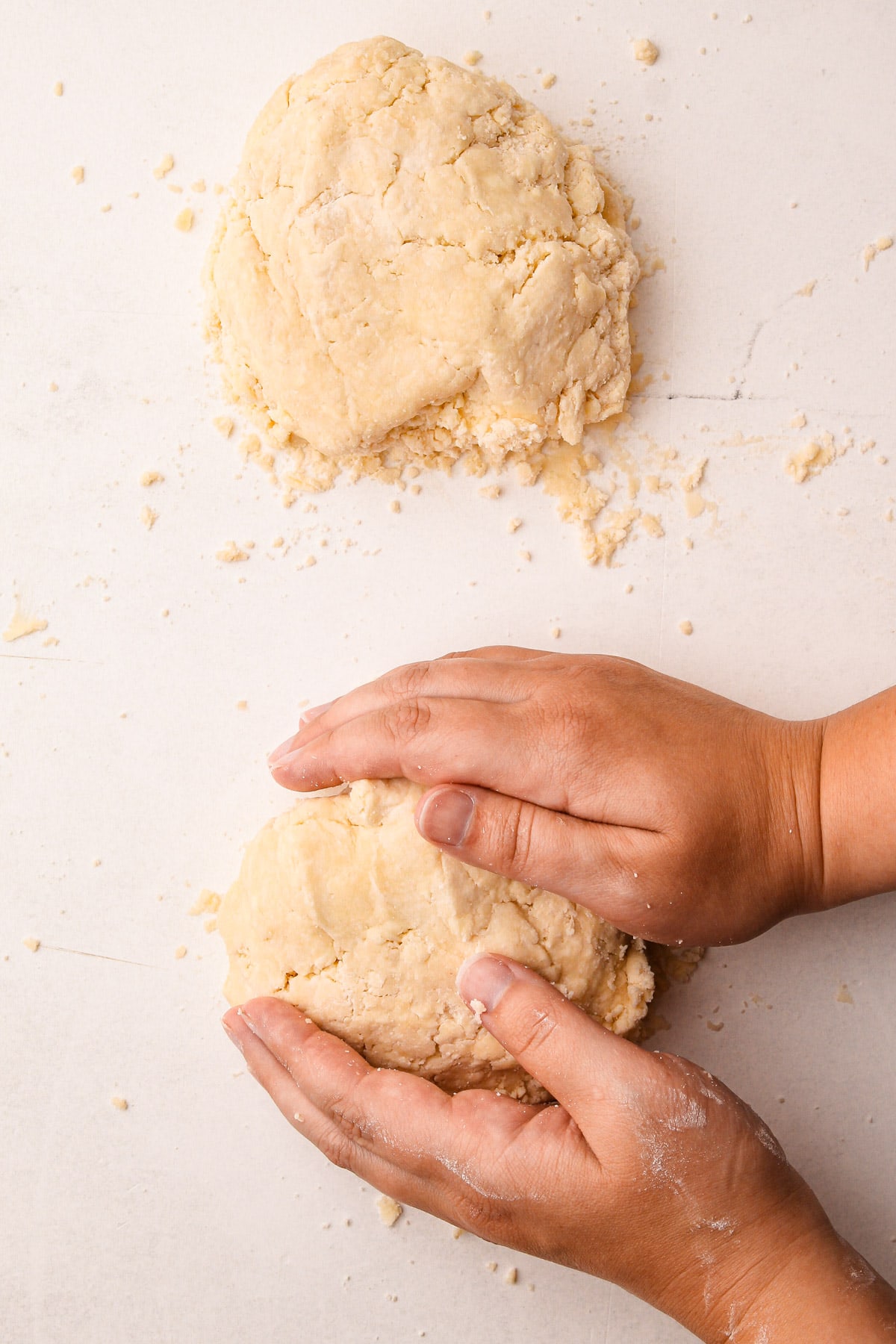
Shape each piece of dough into a round disk.
Storing It
Pie dough keeps really well either in the refrigerator or the freezer. But first, you need to wrap it well!

To prevent the pie dough from oxidizing or turning gray, wrap it tightly in plastic wrap, and then roll it out with a rolling pin to create an airtight seal.
You can store it in the refrigerator for 2-4 days or the freezer for up to 3 months. If you plan to store it for an extended period of time then wrap it up twice!
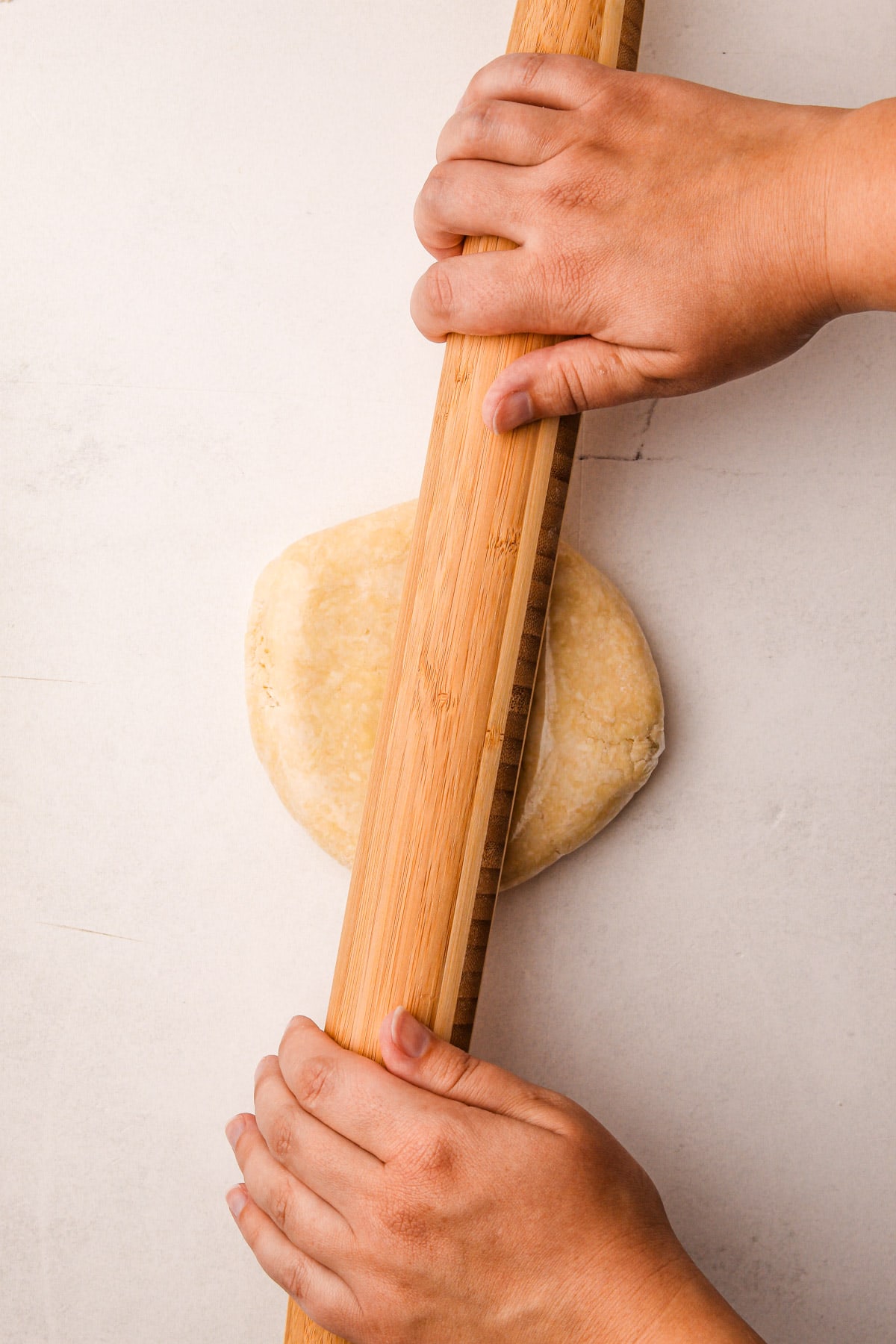
Kelli's Best Tips
- Don't overmix. The downside to stand mixer pie dough is that it has the most gluten formation since it's the most "worked" dough. To adjust for that, do not let the machine run for too long once the dough has come together.
- Let the dough rest. I never advise making dough the same day you plan to bake it. The dough needs to hydrate properly and so the dough should rest at overnight if possible.
- Weigh your ingredients! An electronic kitchen scale is not a huge investment. I can't recommend enough that if you want to get good at baking, get a scale.
- Use high quality butter and flour. Both of these ingredients can vary wildly in quality. In the end, I'd still choose a homemade pie crust made with cheap butter and flour over anything store-bought, but if you are looking for a really amazing pie crust, buying quality ingredients will help. I recommend King Arthur Flour or Bob's Red Mill for flour, and Cabot for butter.
- Work quickly. Melted butter is the enemy here. If you are taking more than 10 minutes to make the dough, your taking too long and your butter is in danger of melting into the dough.
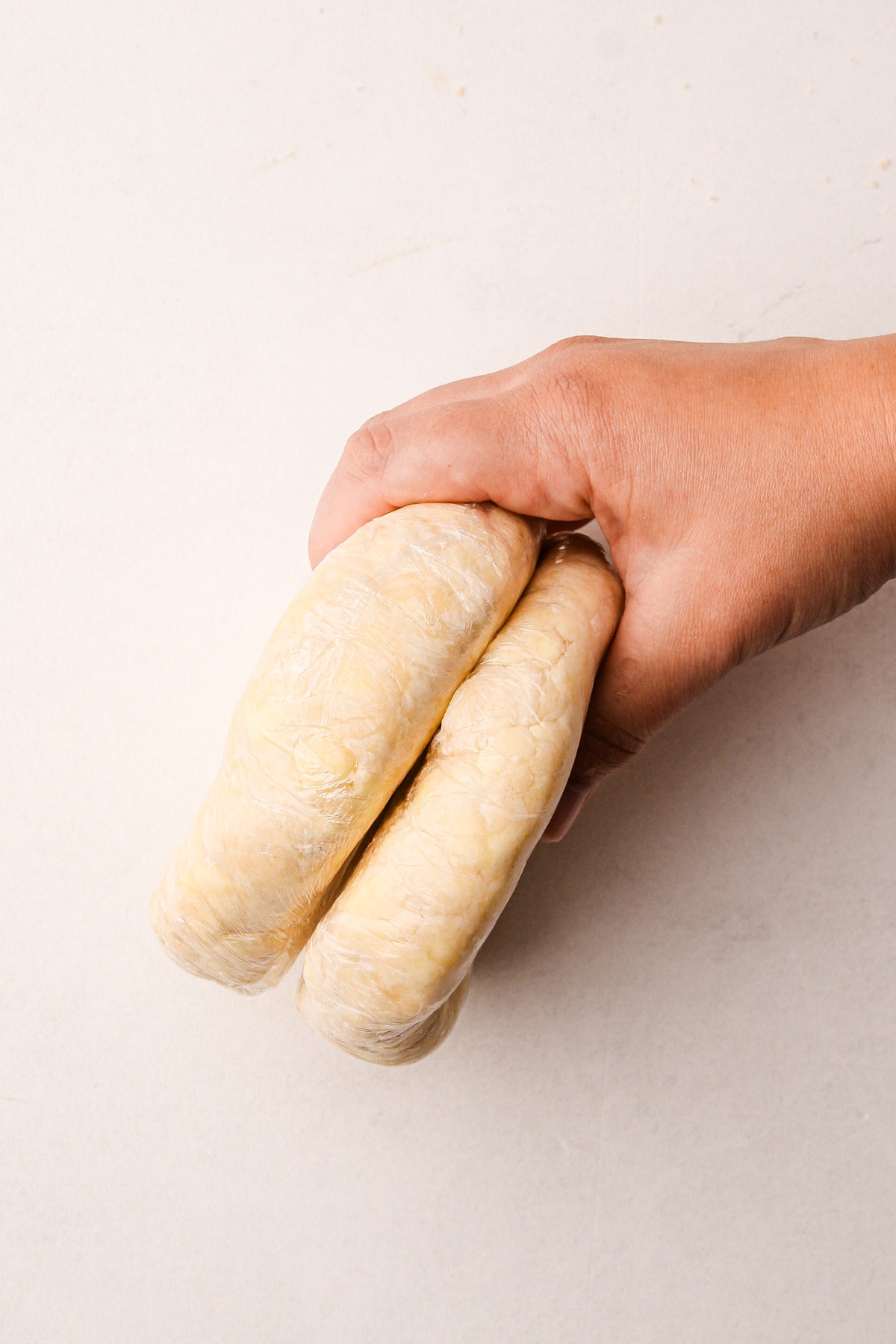
More Resources
For more reading and resources, check out these recipes and tutorials:
- How to Blind Bake Pie Crust
- How to Make a Lattice Pie Crust
- How to Make (and Use) an Egg Wash
- How to Bake a Double Crust Pie
- How to Bake a Frozen Pie
- Leftover Pie Crust Cookies
Other Pie Crust Recipes
- Chocolate Pie Crust
- 3-Ingredient Pie Crust
- Pâte Brisée (Shortcrust Pastry)
- Pâte Sablée (Sweet Tart Dough)
- Cream Cheese Pie Crust
- Whole Wheat Pie Crust
- Spelt Pie Crust
- Pâte Sucrée (Sweet Pie Crust)
I am so honored when you make a recipe from my site! If you use this Stand Mixer Pie Crust guide, please leave a star ⭐️⭐️⭐️⭐️⭐️ rating with your experience! If you have any questions about this recipe, feel free to comment here, and tag me on instagram!
Full Recipe
How to Make Pie Crust in a Stand Mixer
- Prep Time: 00:10
- Total Time: 10 minutes
- Yield: 2 pie crusts
- Category: Pie Crust
- Method: Stand Mixer
Ingredients
- 3 cups (360 grams) all-purpose flour
- 1 teaspoon (4 grams) Diamond Crystal kosher salt (see note for other)
- 16 tablespoons (227 grams) unsalted butter, chilled and cut into 1" pieces
- 1 tablespoon (15 grams) apple cider vinegar
- ½ cup (115 grams) ice water, more as needed
Instructions
- In the bowl of a stand mixer fitted with a paddle attachment, combine the flour, and salt on low speed.
- Add in the butter, and turn the mixer on low (cover the bowl with a towel if flour starts to spill out). Let the paddle cut the butter into the flour until the butter is in small pieces, about the size of a pea, with some larger pieces remaining, no bigger than a marble.
- Pour the vinegar into the water.
- With the mixer running, slowly stream the water into the bowl. Mix until most of the dough comes together around the paddle, about 15 seconds, and then immediately shut off the mixer to not overwork the dough. The dough should hold together easily. If there are any dry spots in the mix, sprinkle (or spray) a few drops of water on that area.
- Transfer the dough mixture onto a work surface and divide into two pieces, each about 12 ounces.
- Place each in a piece of plastic wrap and wrap tightly. Using a rolling pin, roll the wrapped dough out until it stretches to the corner of the plastic wrap.
- Refrigerate for at least 2 hours, but preferably overnight.
Notes
Weighing your flour is the most accurate way to measure. If you aren't going to weigh it, make sure to spoon it into the cup, and then level it off. If you scoop the flour out with the measuring cup and then level, it could change the outcome of the final product
This recipe was tested using Diamond Crystal coarse kosher salt. If you use Morton's kosher salt or fine salt decrease by about half for volume, or use the same amount by weight.
Depending on the size of the mixer, it can make between 2 and 6 pie crusts at a time. The recipe shared in this article yields 2 pie crusts, but it can be doubled or tripled as needed.
You can store pie dough in the refrigerator for 2-4 days or the freezer for up to 3 months. If you plan to store it for an extended period of time then wrap it up twice!
Related
I am so honored when you make a recipe from my site! If you make this RECIPE, please leave a star ⭐️⭐️⭐️⭐️⭐️ rating with your experience! If you have any questions about this recipe, feel free to comment here, and tag me on instagram!
Some of the links on this page may be affiliate links. Everyday Pie is a participant in the Amazon Associates Program. As an Amazon Associate I earn from qualifying purchases, at no extra cost to you.



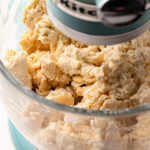
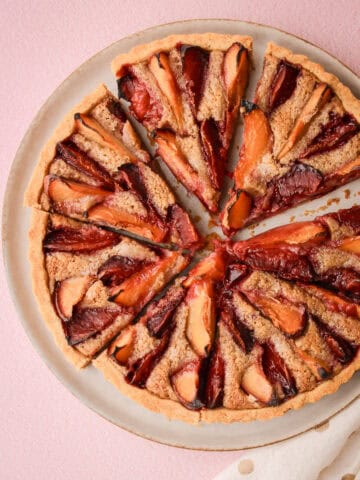
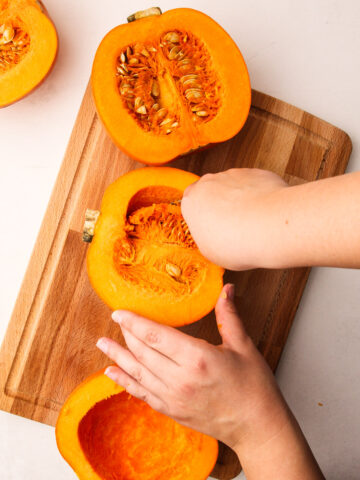
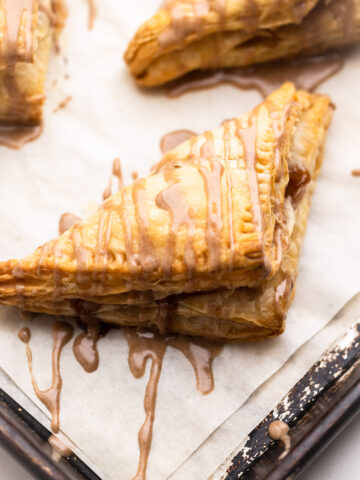
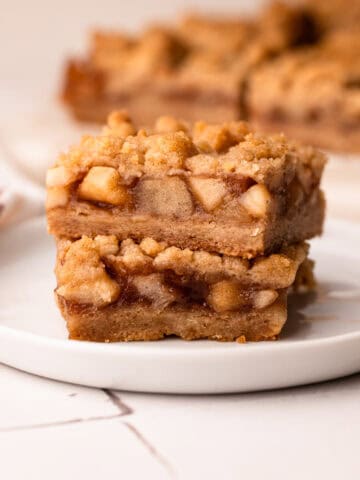
Daun Nassar
I will be making mini Cherry hand pies. You know, like the half moon shape. I was a bit intimidated by pie crust but your dough recipe and explanations were excellent. I have the dough in the refrigerator now. I'm wondering though, what temperature and how long to bake the crust ? I know different sizes such as I'm doing may differ the length of time but approximation or a visual sign to look for would be helpful. Thank you so much and thank you for sharing.
Kelli Avila
It should be between 400-425 and they take at least 20 minutes. Check out this post on cherry hand pies. The half moon shape will need just a few minutes less than the whole version, if that. It's a very similar bake time.
Aaron Marks
Made a half recipe for a single crust for my chicken pot pie. Everyone complimented how delicious the crust was especially! I used ice water and the ACV, pouring only enough in to make it come together. Will definitely be using this recipe again!
Vickie
My daughter taught me a great trick for pie crusts that use butter: freeze the butter sticks, then quickly shred it on the largest shredding side of your box grater ( or shred it in a food processor) in large shreds, like you would grate cheddar cheese. Use these frozen shreds when making the pie crust and the butter won't melt as easily during blending.
Didi
An absolute winner. Made 2 apple pies and wanted to make more since it was such a hit!